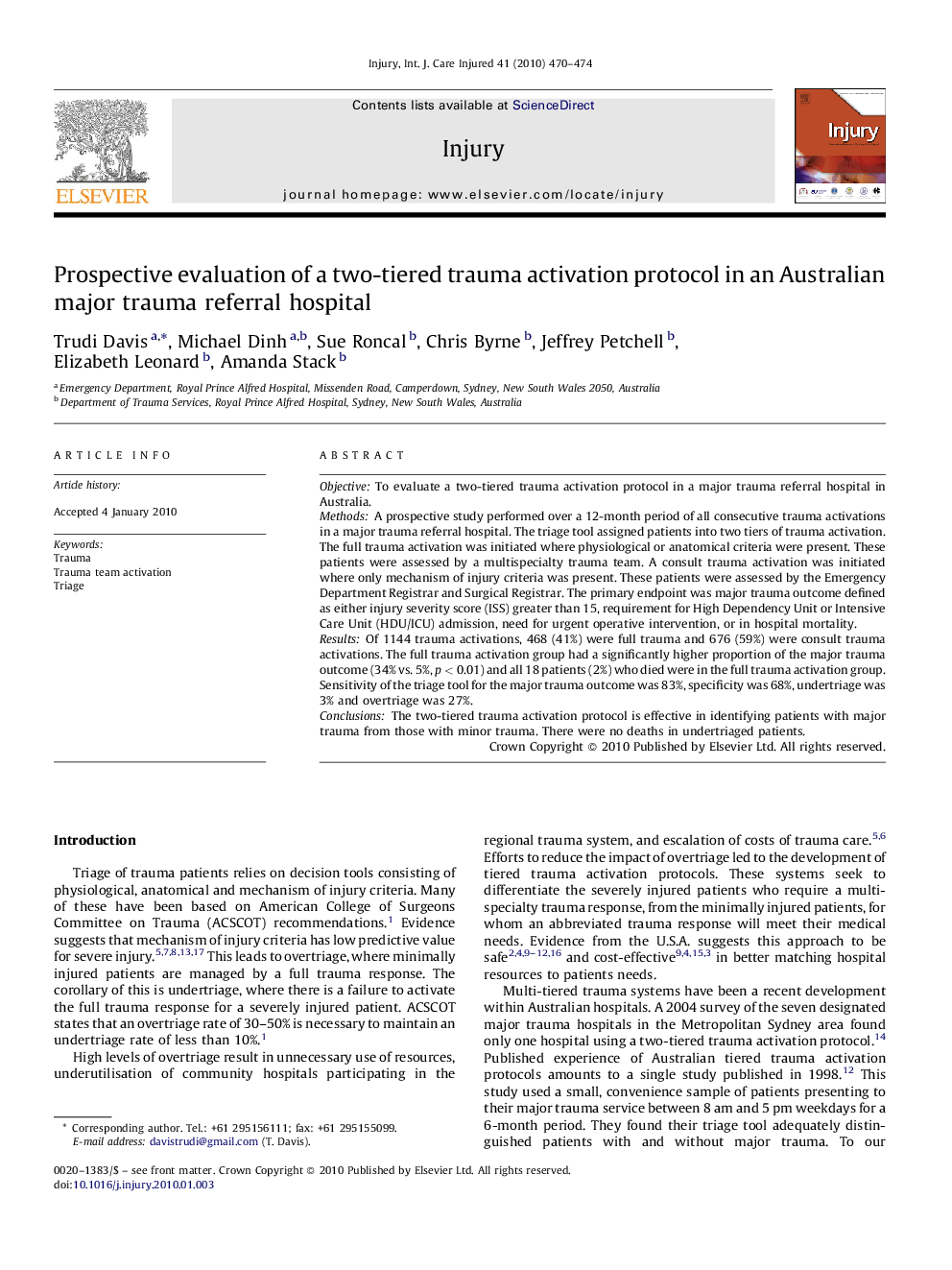| Article ID | Journal | Published Year | Pages | File Type |
|---|---|---|---|---|
| 3241457 | Injury | 2010 | 5 Pages |
ObjectiveTo evaluate a two-tiered trauma activation protocol in a major trauma referral hospital in Australia.MethodsA prospective study performed over a 12-month period of all consecutive trauma activations in a major trauma referral hospital. The triage tool assigned patients into two tiers of trauma activation. The full trauma activation was initiated where physiological or anatomical criteria were present. These patients were assessed by a multispecialty trauma team. A consult trauma activation was initiated where only mechanism of injury criteria was present. These patients were assessed by the Emergency Department Registrar and Surgical Registrar. The primary endpoint was major trauma outcome defined as either injury severity score (ISS) greater than 15, requirement for High Dependency Unit or Intensive Care Unit (HDU/ICU) admission, need for urgent operative intervention, or in hospital mortality.ResultsOf 1144 trauma activations, 468 (41%) were full trauma and 676 (59%) were consult trauma activations. The full trauma activation group had a significantly higher proportion of the major trauma outcome (34% vs. 5%, p < 0.01) and all 18 patients (2%) who died were in the full trauma activation group. Sensitivity of the triage tool for the major trauma outcome was 83%, specificity was 68%, undertriage was 3% and overtriage was 27%.ConclusionsThe two-tiered trauma activation protocol is effective in identifying patients with major trauma from those with minor trauma. There were no deaths in undertriaged patients.
